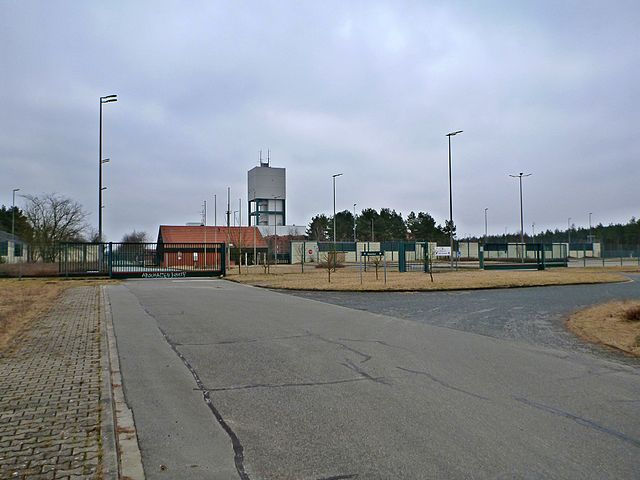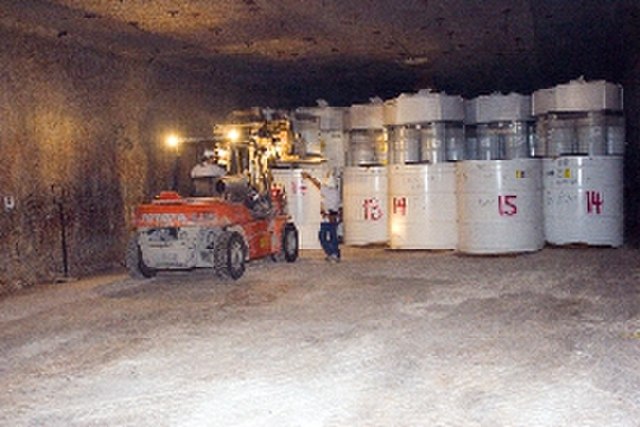The Gorleben salt dome is a proposed deep geological repository in a salt dome in Gorleben in the Lüchow-Dannenberg district in the far north-east of Lower Saxony for low-, medium- and high-level radioactive waste.
Headframe and parts of the buildings at the Gorleben salt dome
Main entry to the pilot mine Gorleben
Entrysigns to the pilot min Gorleben and to the information centre Info Gorleben operated by the Bundesamt für Strahlenschutz
Deep geological repository
A deep geological repository is a way of storing hazardous or radioactive waste within a stable geologic environment, typically 200–1,000 m deep. It entails a combination of waste form, waste package, engineered seals and geology that is suited to provide a high level of long-term isolation and containment without future maintenance. This will prevent any radioactive dangers. A number of mercury, cyanide and arsenic waste repositories are operating worldwide including Canada and Germany. Radioactive waste storage sites are under construction with the Onkalo in Finland being the most advanced.
Technicians emplacing transuranic waste at the Waste Isolation Pilot Plant, near Carlsbad, New Mexico
A Swedish KBS-3 capsule for nuclear waste.
A pilot cave at Onkalo, Finland, at the final depth.
A demonstration tunnel in Olkiluoto.






